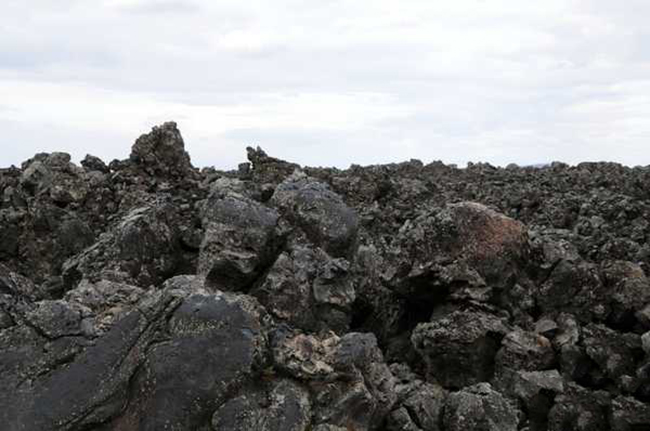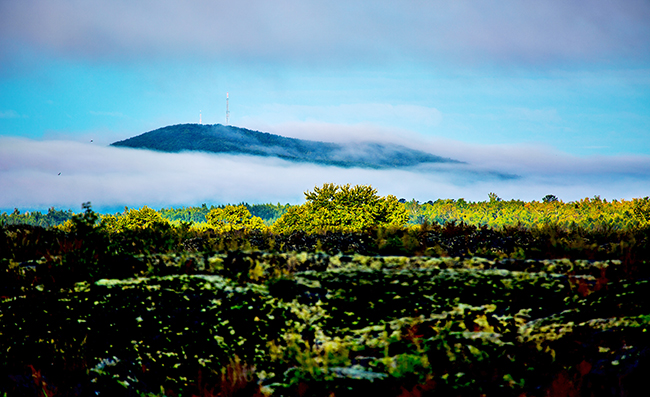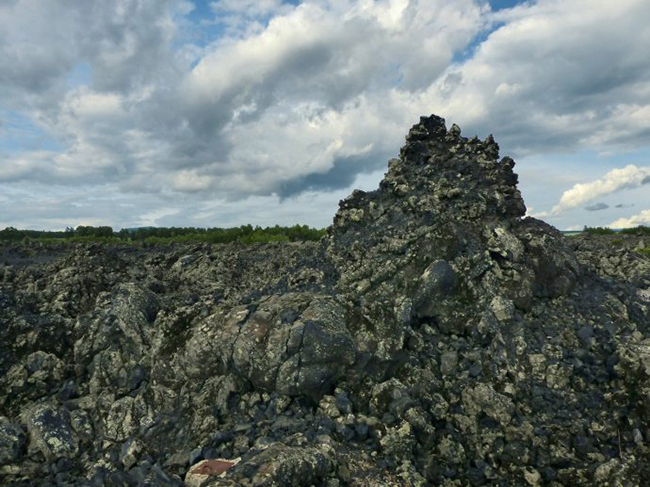All of the Wudalianchi volcanoes produced abundant lava, and many erupted with mild Hawaiian or Strombolian explosive activity. Of the 25 volcanoes at Wudalianchi area, 14 formed large lava plateaus surmounted by pyroclastic cones, while the other 11 are smaller lava shields with no pyroclastic cone. The lavas today cover an area of c.800km2.
Volcanoes with Pyroclastic Cones
The large cone volcanoes are the most prominent in the landscape, their bases comprising shallow lava domes or plateaus, with diameters ranging from 5-15km, and slope between 1° - 6°. Cones are generally made of tephra, lapilli or scoria, frequently interbedded with globules orthin sheets of lava which originated as crateroverflows. Some cones have abundant volcanicbombs and lava cakes. Cones are generally steep-sided, with a bowl-shaped or funnel-shapedcrater, and outer walls which may rise up to 200m above the surrounding lava field. While theoutpouring of lavas from a vent was relativelyquiet, each eruption clearly generated someexplosive activities. The evidence of the eruptionproducts and forms, indicate that, the eruptionstyle of the Wudalianchi volcanoes was mainlyHawaiian, although the cones were products ofmildly explosive Strombolian activity over the vent.Table 2-1 lists the features of the cone volcanoes.

Shield Volcanoes without Pyroclastic Cones
Typically the Wudalianchi shield volcanoes without pyroclastic cones are composed almostexclusively of lava, and have the form of a shallowdome. Some shield volcanoes have saucer-shaped craters on their tops, while others do not.Summit craters are of different shapes and theirsizes, ranging from several meters to 150-200min diameter. As shown, the shieldvolcanoes are distributed mostly along thenortheast or northwest faults, spreading in theform of a string of beads. They are often locatednear to each other, and their lavas have merged,forming an undulating topography.

Subsidiary or Parasitic Cones
These secondary cones are mainly distributedaround Laoheishan Volcano, and the eastern andnorthern parts of Huoshaoshan Volcano. Most ofthem are parasitic structures, and were probablynot connected directly to the main vent, but fedthrough lava tubes. There are more than 100 ofthese cones around the Laoheishan Volcano, andmore than 80 around the Huoshaoshan Volcano.In form, they are individual conical hills and smallin size, ranging from 5m - 10m high (the highestcan be 15 m) and less than 20 m in diameter at thebottom. They are made of spatter, lava overspill,lapilli and scoriaceous blocks, occasionally withvolcanic bombs and base rock. Some cones areformed almost exclusively of lava, while other areformed of tephra and scoria.

Author:司永超/Jessica


